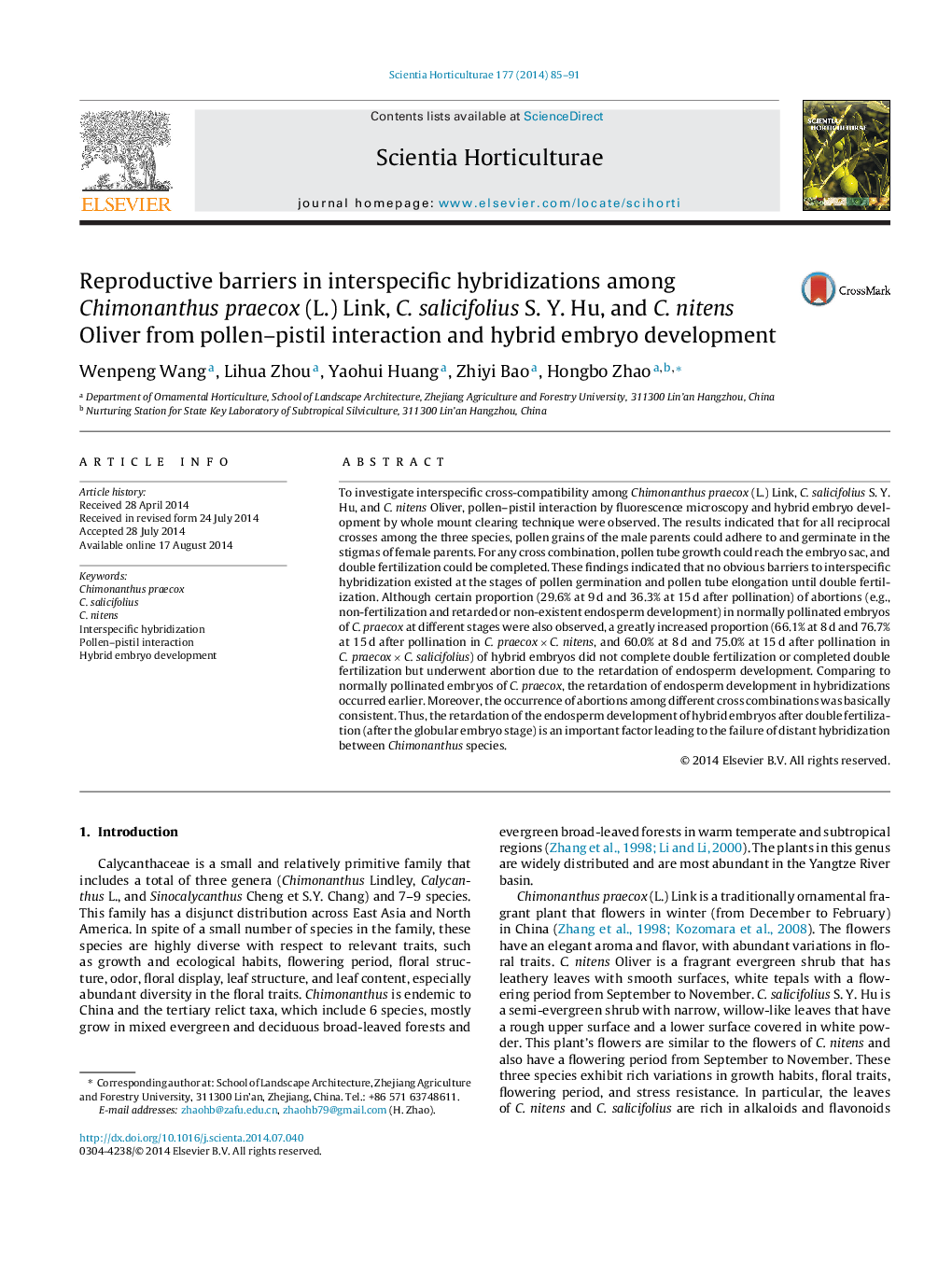| کد مقاله | کد نشریه | سال انتشار | مقاله انگلیسی | نسخه تمام متن |
|---|---|---|---|---|
| 4566694 | 1628821 | 2014 | 7 صفحه PDF | دانلود رایگان |

• Chimonanthus praecox is an excellent winter-blooming fragrant plant.
• Chimonanthus species exhibit rich floral variations and strong stress resistance.
• No prior studies reported on the interspecific cross-compatibility in this genus.
• High proportion of endosperm retardation leaded to hybrid embryo abortion.
To investigate interspecific cross-compatibility among Chimonanthus praecox (L.) Link, C. salicifolius S. Y. Hu, and C. nitens Oliver, pollen–pistil interaction by fluorescence microscopy and hybrid embryo development by whole mount clearing technique were observed. The results indicated that for all reciprocal crosses among the three species, pollen grains of the male parents could adhere to and germinate in the stigmas of female parents. For any cross combination, pollen tube growth could reach the embryo sac, and double fertilization could be completed. These findings indicated that no obvious barriers to interspecific hybridization existed at the stages of pollen germination and pollen tube elongation until double fertilization. Although certain proportion (29.6% at 9 d and 36.3% at 15 d after pollination) of abortions (e.g., non-fertilization and retarded or non-existent endosperm development) in normally pollinated embryos of C. praecox at different stages were also observed, a greatly increased proportion (66.1% at 8 d and 76.7% at 15 d after pollination in C. praecox × C. nitens, and 60.0% at 8 d and 75.0% at 15 d after pollination in C. praecox × C. salicifolius) of hybrid embryos did not complete double fertilization or completed double fertilization but underwent abortion due to the retardation of endosperm development. Comparing to normally pollinated embryos of C. praecox, the retardation of endosperm development in hybridizations occurred earlier. Moreover, the occurrence of abortions among different cross combinations was basically consistent. Thus, the retardation of the endosperm development of hybrid embryos after double fertilization (after the globular embryo stage) is an important factor leading to the failure of distant hybridization between Chimonanthus species.
Journal: Scientia Horticulturae - Volume 177, 2 October 2014, Pages 85–91